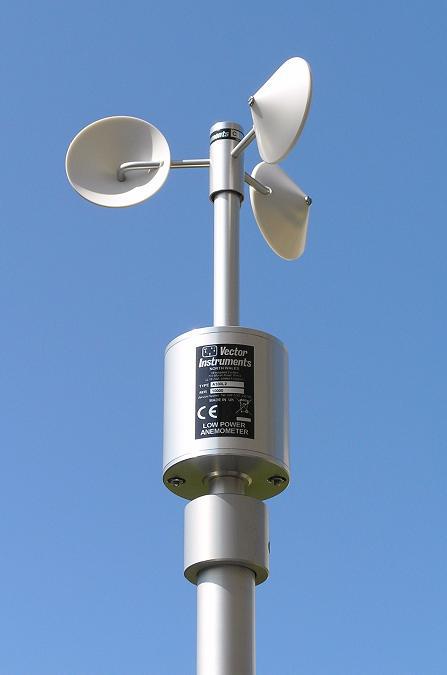Professional Tips for Adjusting Your Anemometer for Optimal Performance
Professional Tips for Adjusting Your Anemometer for Optimal Performance
Blog Article
Discovering the Features and Advantages of Anemometers for Weather Condition Lovers and Experts
From mug anemometers to sonic anemometers, each kind brings its unique set of benefits and applications, losing light on various elements of atmospheric conditions. As we delve right into the features and benefits of anemometers, a much deeper understanding emerges not only of dominating weather condition phenomena yet likewise of the more comprehensive ramifications for sectors like wind energy production and ecological research.
Relevance of Anemometers in Weather Condition Surveillance
Anemometers play an important function in weather condition tracking by providing precise dimensions of wind speed, assisting in forecasting and understanding climate patterns. These instruments, varying from traditional mug anemometers to modern-day ultrasonic anemometers, are crucial for meteorologists, scientists, and climate enthusiasts alike. By gauging wind rate, anemometers help in establishing the intensity of climate phenomena such as tornadoes, storms, and tornados. In addition, they give valuable information for aeronautics, maritime operations, and various markets that are delicate to wind problems.

Kinds Of Anemometers and Their Applications
The most usual types of anemometers consist of cup anemometers, vane anemometers, hot-wire anemometers, and ultrasonic anemometers. Mug anemometers consist of 3 or four cups placed on horizontal arms that turn with the wind, gauging its speed. Vane anemometers, on the various other hand, use an easily rotating vane to line up with the wind instructions, providing both wind rate and direction measurements.
Each sort of anemometer has its distinct benefits and applications. Cup anemometers are robust and appropriate for basic weather tracking, while vane anemometers are preferred for directional measurements. Hot-wire anemometers are sensitive to reduced air velocities, making them excellent for indoor atmospheres. Ultrasonic anemometers are non-intrusive and offer high precision, often made use of in study and specialized weather tracking applications. Recognizing the characteristics and applications of each type of anemometer is vital for selecting one of the most appropriate instrument for details climate checking demands.
Benefits of Using Anemometers in Forecasting
In meteorology, the utilization of anemometers offers invaluable advantages for boosting the precision of climate projecting. Anemometers determine wind speed and direction, providing crucial data for predicting climate patterns. By including wind data into projecting designs, meteorologists can better understand the activity of weather condition systems, expect changes in climatic problems, and issue extra accurate forecasts.
In addition, anemometers play a crucial role in assessing possible weather condition hazards. Checking wind rates assists forecasters predict extreme weather condition occasions such as cyclones, tornadoes, and winter season tornados with higher accuracy. This very early warning system allows authorities to release timely alerts and carry out necessary precaution, reducing the dangers to life and building.
Additionally, anemometers aid in my website optimizing sustainable check here power production. By assessing wind patterns, meteorologists can identify appropriate areas for wind ranches and forecast energy output, adding to the effective generation of wind power.

Anemometers in Wind Energy Production
Offered the important role anemometers play in offering precise wind information for weather forecasting and risk evaluation, their value encompasses the realm of wind energy production. Anemometers are important instruments in the field of wind energy, where the dimension of wind rate and instructions is vital for determining the expediency and effectiveness of wind turbine installations. By properly determining wind rates at varying heights, anemometers help optimize the placement and design of wind turbines to make best use of power result.
In wind ranches, anemometers are strategically put to accumulate real-time wind data that is used to evaluate the potential energy manufacturing of a site. This data contributes in determining the financial viability of wind power tasks and in projecting energy generation to ensure grid security. In addition, anemometers help in keeping an eye on wind conditions to optimize generator efficiency, prevent damages from high winds, and make certain the security of personnel working in the location of wind turbines.
Enhancing Weather Understanding With Anemometers

Anemometers play a crucial function in improving our understanding of microclimates. These localized weather problems can differ considerably from wider regional forecasts, making it necessary to have exact information for particular areas. anemometer. By strategically putting anemometers in different places, researchers can collect thorough info on exactly how wind behaves in various surfaces, urban atmospheres, or bodies of water
Moreover, anemometers add to boosting weather condition forecasting versions by offering real-time information on wind habits. This information is specifically useful for predicting extreme weather condition events, maximizing weblink agricultural techniques, and supporting markets like aviation and maritime navigating. On the whole, anemometers are invaluable tools that enable us to delve much deeper into the intricacies of weather condition systems, ultimately causing more exact predictions and better-informed choices.
Verdict
In verdict, anemometers play a crucial function in weather condition surveillance and projecting by measuring wind speed and instructions. Anemometers also have applications in wind energy production, additional highlighting their value in both weather forecasting and renewable energy industries.
From cup anemometers to sonic anemometers, each kind brings its one-of-a-kind collection of applications and benefits, shedding light on various aspects of atmospheric conditions. These tools, varying from traditional cup anemometers to contemporary ultrasonic anemometers, are necessary for meteorologists, scientists, and climate fanatics alike. The most common kinds of anemometers consist of mug anemometers, vane anemometers, hot-wire anemometers, and ultrasonic anemometers. Mug anemometers are appropriate and robust for general weather surveillance, while vane anemometers are preferred for directional dimensions. Anemometers are essential instruments in the area of wind energy, where the dimension of wind rate and instructions is crucial for determining the feasibility and efficiency of wind generator installments.
Report this page